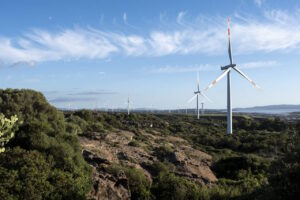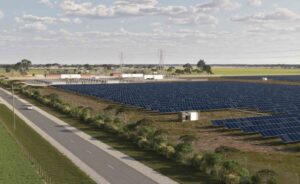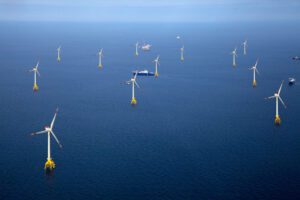An Australian-led research breakthrough has raised fresh hopes for wave power’s potential role in the global shift to renewables, with new technology that promises to double the amount of energy able to be harvested from ocean waves.
Researchers from RMIT University, in collaboration with the Beihang University in China, say they have developed a prototype of a “simple and economic” wave energy conversion device that could be twice as efficient at harvesting power than echnologies developed to date.
The technology is based on a buoy-type converter known as a “point absorber,” that harvests energy from the up and down movement of waves.
The key to the efficiency of the RMIT-created prototype, however, is in its ability to naturally float up and down with the swell of the wave – thus dispensing with the need for complicated synching tech – and its use of a “world-first” dual-turbine design.
According to a report published in the journal Applied Energy, the latter involves two turbine wheels stacked on top of each other, which rotate in opposite directions. These, in turn, are connected to a generator through shafts and a belt-pulley driven transmission system.
The generator is placed inside a buoy above the waterline to keep it out of corrosive seawater and extend the lifespan of the device.
“Our prototype technology overcomes some of the key technical challenges that have been holding back the wave energy industry from large-scale deployment,” said lead researcher Professor Xu Wang.
“With further development, we hope this technology could be the foundation for a thriving new renewable energy industry delivering massive environmental and economic benefits.
Wang said the prototype device had been successfully tested at lab scale and the research team was now hoping to collaborate with industry partners to test a full-scale model, and work towards commercial viability.
“We know it works in our labs, so the next steps are to scale this technology up and test it in a tank or in real-life ocean conditions,” he said.
“By always staying in sync with the movement of the waves, we can maximise the energy that’s harvested,” Wang said.
“Combined with our unique counter-rotating dual turbine wheels, this prototype can double the output power harvested from ocean waves, compared with other experimental point absorber technologies.”
Wang said that tapping wave energy – which is available around 90% of the time, on average, in contrast with wind and solar – could help slash carbon emissions, create new green energy jobs and help solve other key environmental problems.
“For example, as the frequency of drought increases, wave energy could be used to power carbon-neutral desalination plants and supply fresh water for the agriculture industry – a smart adaptation to the challenge of a changing climate,” he said.
The research was supported through an Australian Research Council (ARC) Discovery Project grant.










